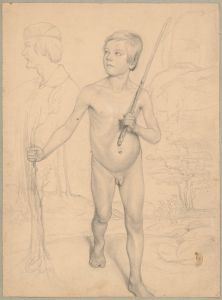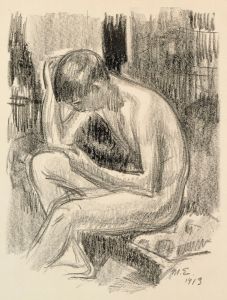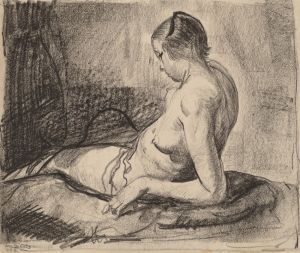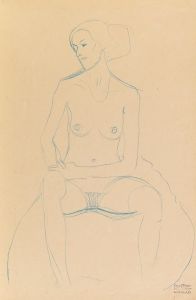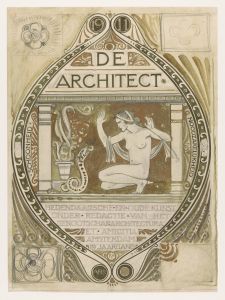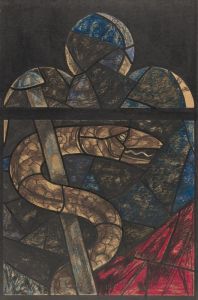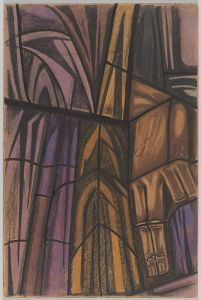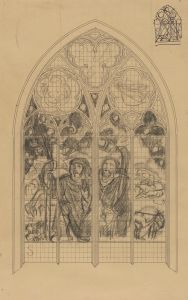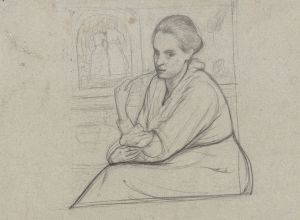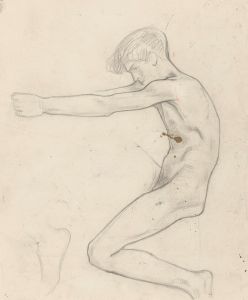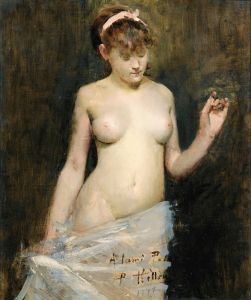
Romp van mannelijk naakt
A hand-painted replica of Richard Nicolaüs Roland Holst’s masterpiece Romp van mannelijk naakt, meticulously crafted by professional artists to capture the true essence of the original. Each piece is created with museum-quality canvas and rare mineral pigments, carefully painted by experienced artists with delicate brushstrokes and rich, layered colors to perfectly recreate the texture of the original artwork. Unlike machine-printed reproductions, this hand-painted version brings the painting to life, infused with the artist’s emotions and skill in every stroke. Whether for personal collection or home decoration, it instantly elevates the artistic atmosphere of any space.
Richard Nicolaüs Roland Holst was a prominent Dutch artist known for his contributions to the art movements of the late 19th and early 20th centuries. Born on December 4, 1868, in Amsterdam, he was part of a family with artistic inclinations, which included his wife, the poet and writer Henriette Roland Holst. He was a versatile artist, engaging in painting, drawing, and graphic design, and was also known for his work as an art educator.
One of his works, "Romp van mannelijk naakt," which translates to "Torso of a Male Nude," reflects his interest in the human form and his skill in capturing it with sensitivity and precision. While specific details about this particular piece are scarce, it is consistent with Roland Holst's broader oeuvre, which often explored themes of humanism and the beauty of the human body. His work frequently exhibited a blend of realism and idealism, capturing the essence of his subjects with a focus on form and structure.
Roland Holst was associated with the Amsterdamse Joffers, a group of artists known for their contributions to Dutch art during a period when Symbolism and Art Nouveau were gaining prominence. His style was influenced by these movements, and he was known for his ability to integrate decorative elements with figurative representation. This approach is evident in his various works, including murals, stained glass, and book illustrations.
In addition to his artistic practice, Roland Holst was an influential teacher at the Rijksakademie van beeldende kunsten (Royal Academy of Visual Arts) in Amsterdam, where he mentored a generation of artists. His teachings emphasized the importance of craftsmanship and the integration of art into everyday life, principles that were reflected in his own work.
Despite the lack of extensive documentation on "Romp van mannelijk naakt," it can be inferred that the piece aligns with Roland Holst's artistic philosophy. His works often conveyed a sense of harmony and balance, achieved through careful composition and a deep understanding of the human anatomy. This understanding was not merely technical but also philosophical, as he believed in the power of art to elevate the human spirit and connect individuals to a greater sense of beauty and truth.
Roland Holst's legacy is marked by his contributions to Dutch art and his role in shaping the artistic landscape of his time. His works continue to be appreciated for their aesthetic qualities and their reflection of the cultural and artistic currents of the late 19th and early 20th centuries. While "Romp van mannelijk naakt" may not be as widely recognized as some of his other pieces, it remains a testament to his skill and his enduring interest in the human form as a subject of artistic exploration.





